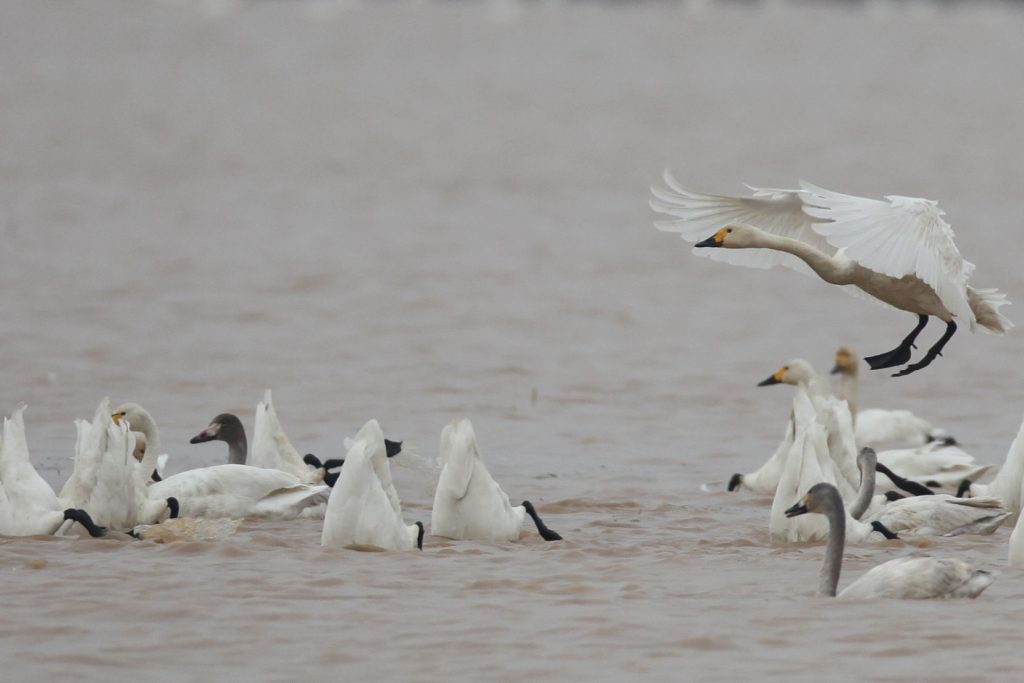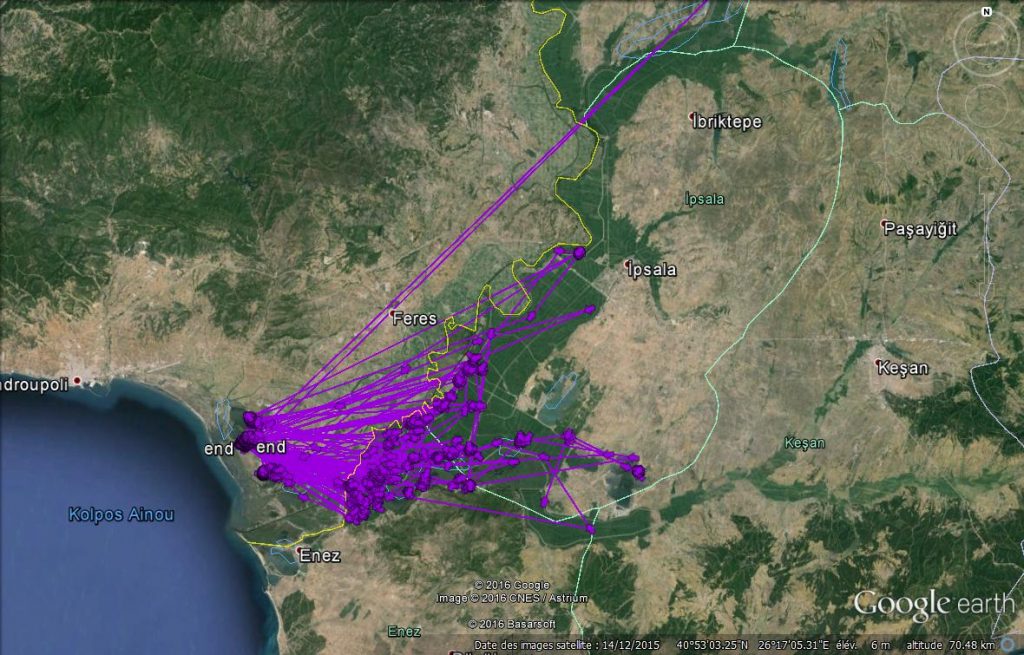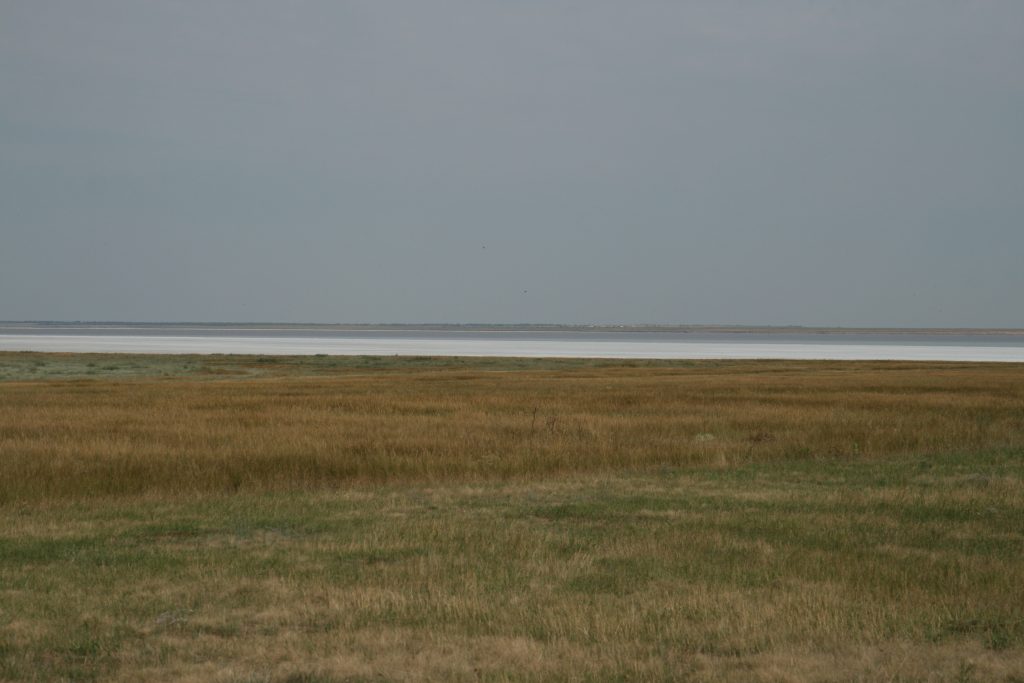The first two Bewick’s Swans equipped with a GPS tag during past summer in the tundra of Yamal but at the same site a few days apart, have very recently left their wintering site separated one of the other by … 8000 km!
The first to take the northern route is the adult female 832X. She left Poyang Lake area (southeast China) on 03/03/2016. She had arrived in the region on 25/11/2015 and has successively visited the Sai Hu lakes, Longhu and Longgan lakes. So she stayed a total 99 days near the Yangtze River before resuming her migration back to the north.

Between 03/03/2016 and 07/03/2016, 832X has traveled 1400 km to the north-northeast with a maximum peak of 215 km in 3 hours. Since she is in halt on the Yellow River in the district of Donghan, 250 km from the border with Mongolia. This is exactly where 865X, another Bewick’s Swan from Yamal having wintered in the Yangtze region, had stopped in last autumn migration.
The second Bewick who started the spring migration is 854X. It is a second-winter male that had (after years of questions !) indicated us the route to the Evros Delta. 854X had arrived in the Evros on 12/12/2015.

After 86 days of back and forth between Greece and Turkey, the Evros river making the border between the two countries, 854X flew in the late afternoon of 07/03/2016, heading northeast. In a step of 12 hours of continuous flight and a peak of 265 km traveled in 3 hours, 854X flew over the Black Sea in almost straight line to land on the morning of 08/03/2016 in the Nature Reserve of Chernomorsky, just east of the Bay of Tendra, Ukraine.
Twelve hours later, 854X set off again, this time eastward, for a flight of three hours maximum. At nightfall, he landed at sea, a few km off the Gulf of Khorli, a site where gather in the summer thousands of Mute Swans in flightless moult.

The GPS positions received suggests that during the night, 854X drifted 11 km towards the east. At dawn on 09/03/2016, he took off for a short 90 km flight which led he to the impressive hyper saline lagoons of Sivash, north of Crimea. He stayed there four days and was located several times in cropland area close to water bodies. Most likely he was feeding there.

854X then resumed flight to the east for about 40 km. New stop at night, but this time on Sea of Azov. And new drift during the night, up to 24 km from the coast this time. This morning, 14/03/2016, 854X resumed its journey shortly after 05:00 am (local time) always towards the east. Six hours later he was located 290 km to the east, probably when flying. 854X was then close to Beisug liman where he has stopped 51 days during post-breeding migration 2015, prior to arrive in the Evros Delta. Will he halt there again or will he continue his journey eastward to Russia and Kazakhstan?
To be continued !
